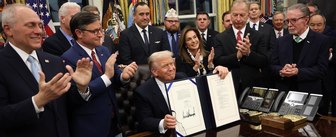Three-quarters of Americans (75%) believe people in the U.S. pay more than people in other wealthy countries for prescription drugs, and majorities favor several policies that aim to lower costs for some groups via government intervention.
New polling by the Economist/YouGov finds that 68% of Americans strongly or somewhat support allowing Medicare to negotiate drug prices directly with prescription-drug manufacturers — a policy implemented through the Inflation Reduction Act last year. Support for the drug-negotiation policy is bipartisan, with 79% of Democrats and 65% of Republicans in favor of it.
While just 12% of Americans say they've ever been prescribed one or more of the first 10 drugs for which Medicare will negotiate prices, 41% of people think it is very or somewhat likely that allowing Medicare negotiation will lower drug costs for them personally.
Many people (39%) know someone who uses insulin — including themselves, a family member, friend, or acquaintance. The government’s price cap on the cost of insulin receives overwhelming support: 78% strongly or somewhat support it and only 10% strongly or somewhat oppose it.
Sizable shares of Americans are unsure what effects drug price negotiation will have. More say that allowing the government to negotiate prices will lower the costs of prescription drugs than say it won't (45% vs. 22%) and Americans are also more likely to say the policy will increase transparency in drug pricing than to say it won't (39% vs. 26%). There is more division on whether drug price negotiation will decrease profits for pharmaceutical companies (36% say it will vs. 31% who say it will not) or lead to shortages of prescription drugs (28% vs. 33%).
See the toplines and crosstabs from the Economist/YouGov poll conducted on September 2 - 5, 2023 among 1,500 U.S. adult citizens.
Methodology: Respondents were selected from YouGov’s opt-in panel using sample matching. A random sample (stratified by gender, age, race, education, geographic region, and voter registration) was selected from the 2019 American Community Survey. The sample was weighted according to gender, age, race, education, 2020 election turnout and presidential vote, baseline party identification, and current voter registration status. Demographic weighting targets come from the 2019 American Community Survey. Baseline party identification is the respondent’s most recent answer given prior to November 1, 2022, and is weighted to the estimated distribution at that time (33% Democratic, 31% Republican). The margin of error for the overall sample is approximately 3%.
Image: Unsplash (Roberto Sorin)













